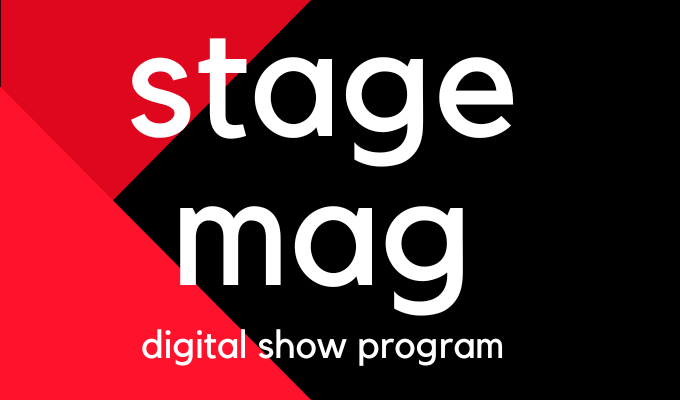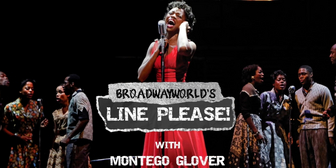- Exclusive: Oh My Pod U Guys- Secretary Sixty-Nine with Vicki Lewis
- MAMMA MIA! Is Back: A Look at the Iconic ABBA Songs That Drive the Musical
- Video: How Well Does Montego Glover Remember Her Old Lines?
Latest News
Trending Stories
Recommended for You
Casting & Cities Announced For THE OUTSIDERS North American Tour
Additional tour stops will be announced at a later date.
Video: A CHORUS LINE Celebrates 50 Years With A Cast Flash Mob in NYC
Original cast members will reunite on Sunday, July 27, 2025 at the Shubert Theatre.
Andrew Barth Feldman Will Join MAYBE HAPPY ENDING
Feldman will play the role of “Oliver” beginning on Tuesday, September 2, 2025 for a special limited 9-week run through Saturday, November 1, 2025.
Exclusive: Music, Mirrors & Memories- 4 Cassies Reflect on One of Broadway's Greatest Roles
A Chorus Line opened on Broadway 50 years ago on July 25, 1975.
Ticket Central
Hot Photos this week
 Photo: First Look at DOLLY: A TRUE ORIGINAL MUSICAL
Get a First look at Carrie St. Louis as ‘Dolly,’ Katie Rose Clarke as ‘Dolly Parton,’ and Quinn Titcomb as ‘Little Dolly.’
Photo: First Look at DOLLY: A TRUE ORIGINAL MUSICAL
Get a First look at Carrie St. Louis as ‘Dolly,’ Katie Rose Clarke as ‘Dolly Parton,’ and Quinn Titcomb as ‘Little Dolly.’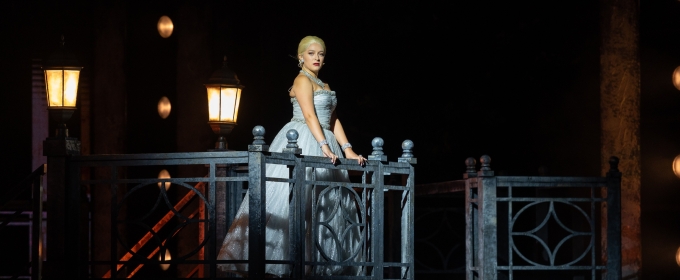 First Look at EVITA at The Muny
Performances run July 18-24.
First Look at EVITA at The Muny
Performances run July 18-24. Broadway Stars Come Together for the 27th Annual Broadway Barks
The event took place on Saturday, July 12 in Shubert Alley.
Broadway Stars Come Together for the 27th Annual Broadway Barks
The event took place on Saturday, July 12 in Shubert Alley. Lorde Visits The Cast of JOHN PROCTOR IS THE VILLAIN
Lorde visited with the cast on Friday, July 11.
Lorde Visits The Cast of JOHN PROCTOR IS THE VILLAIN
Lorde visited with the cast on Friday, July 11. Scherzinger and the Cast of SUNSET BLVD. Take Final Bow
The show played its final performance on July 20 at the St. James Theatre following 20 previews and 312 regular performances.
Scherzinger and the Cast of SUNSET BLVD. Take Final Bow
The show played its final performance on July 20 at the St. James Theatre following 20 previews and 312 regular performances. Billy Porter and Marisha Wallace in CABARET
Porter and Wallace begin performances on Tuesday, July 22.
Billy Porter and Marisha Wallace in CABARET
Porter and Wallace begin performances on Tuesday, July 22. First Look at EVITA at The Muny
Performances run July 18-24.
First Look at EVITA at The Muny
Performances run July 18-24. Broadway Stars Come Together for the 27th Annual Broadway Barks
The event took place on Saturday, July 12 in Shubert Alley.
Broadway Stars Come Together for the 27th Annual Broadway Barks
The event took place on Saturday, July 12 in Shubert Alley. Lorde Visits The Cast of JOHN PROCTOR IS THE VILLAIN
Lorde visited with the cast on Friday, July 11.
Lorde Visits The Cast of JOHN PROCTOR IS THE VILLAIN
Lorde visited with the cast on Friday, July 11. Scherzinger and the Cast of SUNSET BLVD. Take Final Bow
The show played its final performance on July 20 at the St. James Theatre following 20 previews and 312 regular performances.
Scherzinger and the Cast of SUNSET BLVD. Take Final Bow
The show played its final performance on July 20 at the St. James Theatre following 20 previews and 312 regular performances. Billy Porter and Marisha Wallace in CABARET
Porter and Wallace begin performances on Tuesday, July 22.
Billy Porter and Marisha Wallace in CABARET
Porter and Wallace begin performances on Tuesday, July 22. The Hollywood Museum Opens Marx Brothers Exhibit LEGENDS OF LAUGHTER
Exhibit features rare memorabilia, original costumes, and family tributes to comedy legends.
The Hollywood Museum Opens Marx Brothers Exhibit LEGENDS OF LAUGHTER
Exhibit features rare memorabilia, original costumes, and family tributes to comedy legends. Broadway Stars Come Together for the 27th Annual Broadway Barks
The event took place on Saturday, July 12 in Shubert Alley.
Broadway Stars Come Together for the 27th Annual Broadway Barks
The event took place on Saturday, July 12 in Shubert Alley. Lorde Visits The Cast of JOHN PROCTOR IS THE VILLAIN
Lorde visited with the cast on Friday, July 11.
Lorde Visits The Cast of JOHN PROCTOR IS THE VILLAIN
Lorde visited with the cast on Friday, July 11. Scherzinger and the Cast of SUNSET BLVD. Take Final Bow
The show played its final performance on July 20 at the St. James Theatre following 20 previews and 312 regular performances.
Scherzinger and the Cast of SUNSET BLVD. Take Final Bow
The show played its final performance on July 20 at the St. James Theatre following 20 previews and 312 regular performances. Billy Porter and Marisha Wallace in CABARET
Porter and Wallace begin performances on Tuesday, July 22.
Billy Porter and Marisha Wallace in CABARET
Porter and Wallace begin performances on Tuesday, July 22. The Hollywood Museum Opens Marx Brothers Exhibit LEGENDS OF LAUGHTER
Exhibit features rare memorabilia, original costumes, and family tributes to comedy legends.
The Hollywood Museum Opens Marx Brothers Exhibit LEGENDS OF LAUGHTER
Exhibit features rare memorabilia, original costumes, and family tributes to comedy legends.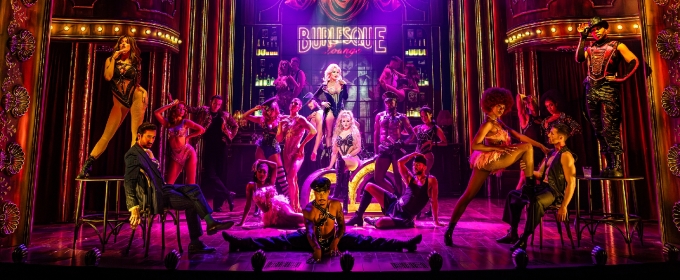 Jess Folley, Todrick Hall and More in BURLESQUE THE MUSICAL in London
The show plays for a limited season until Saturday 6 September 2025.
Jess Folley, Todrick Hall and More in BURLESQUE THE MUSICAL in London
The show plays for a limited season until Saturday 6 September 2025. Lorde Visits The Cast of JOHN PROCTOR IS THE VILLAIN
Lorde visited with the cast on Friday, July 11.
Lorde Visits The Cast of JOHN PROCTOR IS THE VILLAIN
Lorde visited with the cast on Friday, July 11. Scherzinger and the Cast of SUNSET BLVD. Take Final Bow
The show played its final performance on July 20 at the St. James Theatre following 20 previews and 312 regular performances.
Scherzinger and the Cast of SUNSET BLVD. Take Final Bow
The show played its final performance on July 20 at the St. James Theatre following 20 previews and 312 regular performances. Billy Porter and Marisha Wallace in CABARET
Porter and Wallace begin performances on Tuesday, July 22.
Billy Porter and Marisha Wallace in CABARET
Porter and Wallace begin performances on Tuesday, July 22. The Hollywood Museum Opens Marx Brothers Exhibit LEGENDS OF LAUGHTER
Exhibit features rare memorabilia, original costumes, and family tributes to comedy legends.
The Hollywood Museum Opens Marx Brothers Exhibit LEGENDS OF LAUGHTER
Exhibit features rare memorabilia, original costumes, and family tributes to comedy legends. Jess Folley, Todrick Hall and More in BURLESQUE THE MUSICAL in London
The show plays for a limited season until Saturday 6 September 2025.
Jess Folley, Todrick Hall and More in BURLESQUE THE MUSICAL in London
The show plays for a limited season until Saturday 6 September 2025.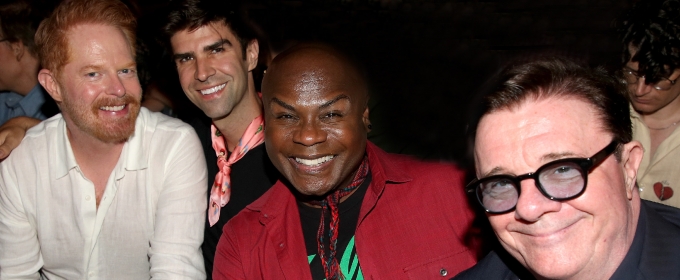 Cole Escola, Sadie Sink, and More at Opening Night of Josh Sharp's TA-DA!
Performances will continue for a limited run through August 23.
Cole Escola, Sadie Sink, and More at Opening Night of Josh Sharp's TA-DA!
Performances will continue for a limited run through August 23. Scherzinger and the Cast of SUNSET BLVD. Take Final Bow
The show played its final performance on July 20 at the St. James Theatre following 20 previews and 312 regular performances.
Scherzinger and the Cast of SUNSET BLVD. Take Final Bow
The show played its final performance on July 20 at the St. James Theatre following 20 previews and 312 regular performances. Billy Porter and Marisha Wallace in CABARET
Porter and Wallace begin performances on Tuesday, July 22.
Billy Porter and Marisha Wallace in CABARET
Porter and Wallace begin performances on Tuesday, July 22. The Hollywood Museum Opens Marx Brothers Exhibit LEGENDS OF LAUGHTER
Exhibit features rare memorabilia, original costumes, and family tributes to comedy legends.
The Hollywood Museum Opens Marx Brothers Exhibit LEGENDS OF LAUGHTER
Exhibit features rare memorabilia, original costumes, and family tributes to comedy legends. Jess Folley, Todrick Hall and More in BURLESQUE THE MUSICAL in London
The show plays for a limited season until Saturday 6 September 2025.
Jess Folley, Todrick Hall and More in BURLESQUE THE MUSICAL in London
The show plays for a limited season until Saturday 6 September 2025. Cole Escola, Sadie Sink, and More at Opening Night of Josh Sharp's TA-DA!
Performances will continue for a limited run through August 23.
Cole Escola, Sadie Sink, and More at Opening Night of Josh Sharp's TA-DA!
Performances will continue for a limited run through August 23. Phylicia Rashad and the Cast of IMMEDIATE FAMILY Meets the Press
Performances run July 29 through August 31 in the Booth Playhouse in Charlotte, North Carolina.
Phylicia Rashad and the Cast of IMMEDIATE FAMILY Meets the Press
Performances run July 29 through August 31 in the Booth Playhouse in Charlotte, North Carolina. Billy Porter and Marisha Wallace in CABARET
Porter and Wallace begin performances on Tuesday, July 22.
Billy Porter and Marisha Wallace in CABARET
Porter and Wallace begin performances on Tuesday, July 22. The Hollywood Museum Opens Marx Brothers Exhibit LEGENDS OF LAUGHTER
Exhibit features rare memorabilia, original costumes, and family tributes to comedy legends.
The Hollywood Museum Opens Marx Brothers Exhibit LEGENDS OF LAUGHTER
Exhibit features rare memorabilia, original costumes, and family tributes to comedy legends. Jess Folley, Todrick Hall and More in BURLESQUE THE MUSICAL in London
The show plays for a limited season until Saturday 6 September 2025.
Jess Folley, Todrick Hall and More in BURLESQUE THE MUSICAL in London
The show plays for a limited season until Saturday 6 September 2025. Cole Escola, Sadie Sink, and More at Opening Night of Josh Sharp's TA-DA!
Performances will continue for a limited run through August 23.
Cole Escola, Sadie Sink, and More at Opening Night of Josh Sharp's TA-DA!
Performances will continue for a limited run through August 23. Phylicia Rashad and the Cast of IMMEDIATE FAMILY Meets the Press
Performances run July 29 through August 31 in the Booth Playhouse in Charlotte, North Carolina.
Phylicia Rashad and the Cast of IMMEDIATE FAMILY Meets the Press
Performances run July 29 through August 31 in the Booth Playhouse in Charlotte, North Carolina.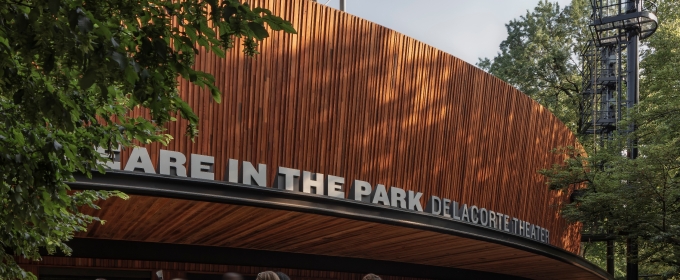 First Look at the Revitalized Delacorte Theater
The Delacorte will officially reopen to the public on August 7, with Twelfth Night.
First Look at the Revitalized Delacorte Theater
The Delacorte will officially reopen to the public on August 7, with Twelfth Night. The Hollywood Museum Opens Marx Brothers Exhibit LEGENDS OF LAUGHTER
Exhibit features rare memorabilia, original costumes, and family tributes to comedy legends.
The Hollywood Museum Opens Marx Brothers Exhibit LEGENDS OF LAUGHTER
Exhibit features rare memorabilia, original costumes, and family tributes to comedy legends. Jess Folley, Todrick Hall and More in BURLESQUE THE MUSICAL in London
The show plays for a limited season until Saturday 6 September 2025.
Jess Folley, Todrick Hall and More in BURLESQUE THE MUSICAL in London
The show plays for a limited season until Saturday 6 September 2025. Cole Escola, Sadie Sink, and More at Opening Night of Josh Sharp's TA-DA!
Performances will continue for a limited run through August 23.
Cole Escola, Sadie Sink, and More at Opening Night of Josh Sharp's TA-DA!
Performances will continue for a limited run through August 23. Phylicia Rashad and the Cast of IMMEDIATE FAMILY Meets the Press
Performances run July 29 through August 31 in the Booth Playhouse in Charlotte, North Carolina.
Phylicia Rashad and the Cast of IMMEDIATE FAMILY Meets the Press
Performances run July 29 through August 31 in the Booth Playhouse in Charlotte, North Carolina. First Look at the Revitalized Delacorte Theater
The Delacorte will officially reopen to the public on August 7, with Twelfth Night.
First Look at the Revitalized Delacorte Theater
The Delacorte will officially reopen to the public on August 7, with Twelfth Night. Noah Schnapp Visits STRANGER THINGS on Broadway
The series star joined Tony nominee Louis McCartney, star of the stage show, to surprise Stranger Things fans at the stage door after the performance.
Noah Schnapp Visits STRANGER THINGS on Broadway
The series star joined Tony nominee Louis McCartney, star of the stage show, to surprise Stranger Things fans at the stage door after the performance. Jess Folley, Todrick Hall and More in BURLESQUE THE MUSICAL in London
The show plays for a limited season until Saturday 6 September 2025.
Jess Folley, Todrick Hall and More in BURLESQUE THE MUSICAL in London
The show plays for a limited season until Saturday 6 September 2025. Cole Escola, Sadie Sink, and More at Opening Night of Josh Sharp's TA-DA!
Performances will continue for a limited run through August 23.
Cole Escola, Sadie Sink, and More at Opening Night of Josh Sharp's TA-DA!
Performances will continue for a limited run through August 23. Phylicia Rashad and the Cast of IMMEDIATE FAMILY Meets the Press
Performances run July 29 through August 31 in the Booth Playhouse in Charlotte, North Carolina.
Phylicia Rashad and the Cast of IMMEDIATE FAMILY Meets the Press
Performances run July 29 through August 31 in the Booth Playhouse in Charlotte, North Carolina. First Look at the Revitalized Delacorte Theater
The Delacorte will officially reopen to the public on August 7, with Twelfth Night.
First Look at the Revitalized Delacorte Theater
The Delacorte will officially reopen to the public on August 7, with Twelfth Night. Noah Schnapp Visits STRANGER THINGS on Broadway
The series star joined Tony nominee Louis McCartney, star of the stage show, to surprise Stranger Things fans at the stage door after the performance.
Noah Schnapp Visits STRANGER THINGS on Broadway
The series star joined Tony nominee Louis McCartney, star of the stage show, to surprise Stranger Things fans at the stage door after the performance.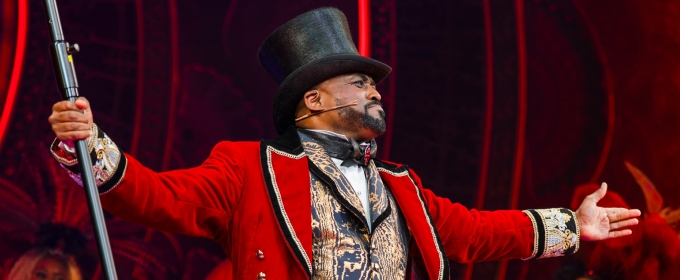 Wayne Brady and Taye Diggs Join the Cast of MOULIN ROUGE! THE MUSICAL
Diggs plays through September 28, with Brady staying through November 9.
Wayne Brady and Taye Diggs Join the Cast of MOULIN ROUGE! THE MUSICAL
Diggs plays through September 28, with Brady staying through November 9. Cole Escola, Sadie Sink, and More at Opening Night of Josh Sharp's TA-DA!
Performances will continue for a limited run through August 23.
Cole Escola, Sadie Sink, and More at Opening Night of Josh Sharp's TA-DA!
Performances will continue for a limited run through August 23. Phylicia Rashad and the Cast of IMMEDIATE FAMILY Meets the Press
Performances run July 29 through August 31 in the Booth Playhouse in Charlotte, North Carolina.
Phylicia Rashad and the Cast of IMMEDIATE FAMILY Meets the Press
Performances run July 29 through August 31 in the Booth Playhouse in Charlotte, North Carolina. First Look at the Revitalized Delacorte Theater
The Delacorte will officially reopen to the public on August 7, with Twelfth Night.
First Look at the Revitalized Delacorte Theater
The Delacorte will officially reopen to the public on August 7, with Twelfth Night. Noah Schnapp Visits STRANGER THINGS on Broadway
The series star joined Tony nominee Louis McCartney, star of the stage show, to surprise Stranger Things fans at the stage door after the performance.
Noah Schnapp Visits STRANGER THINGS on Broadway
The series star joined Tony nominee Louis McCartney, star of the stage show, to surprise Stranger Things fans at the stage door after the performance. Wayne Brady and Taye Diggs Join the Cast of MOULIN ROUGE! THE MUSICAL
Diggs plays through September 28, with Brady staying through November 9.
Wayne Brady and Taye Diggs Join the Cast of MOULIN ROUGE! THE MUSICAL
Diggs plays through September 28, with Brady staying through November 9.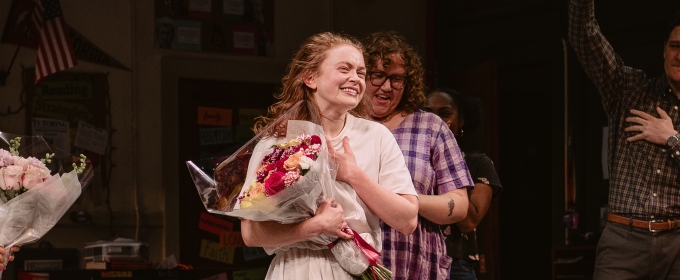 Sadie Sink Takes Final Bow in JOHN PROCTOR IS THE VILLAIN
She played her final performance on Sunday, July 13.
Sadie Sink Takes Final Bow in JOHN PROCTOR IS THE VILLAIN
She played her final performance on Sunday, July 13. Phylicia Rashad and the Cast of IMMEDIATE FAMILY Meets the Press
Performances run July 29 through August 31 in the Booth Playhouse in Charlotte, North Carolina.
Phylicia Rashad and the Cast of IMMEDIATE FAMILY Meets the Press
Performances run July 29 through August 31 in the Booth Playhouse in Charlotte, North Carolina. First Look at the Revitalized Delacorte Theater
The Delacorte will officially reopen to the public on August 7, with Twelfth Night.
First Look at the Revitalized Delacorte Theater
The Delacorte will officially reopen to the public on August 7, with Twelfth Night. Noah Schnapp Visits STRANGER THINGS on Broadway
The series star joined Tony nominee Louis McCartney, star of the stage show, to surprise Stranger Things fans at the stage door after the performance.
Noah Schnapp Visits STRANGER THINGS on Broadway
The series star joined Tony nominee Louis McCartney, star of the stage show, to surprise Stranger Things fans at the stage door after the performance. Wayne Brady and Taye Diggs Join the Cast of MOULIN ROUGE! THE MUSICAL
Diggs plays through September 28, with Brady staying through November 9.
Wayne Brady and Taye Diggs Join the Cast of MOULIN ROUGE! THE MUSICAL
Diggs plays through September 28, with Brady staying through November 9. Sadie Sink Takes Final Bow in JOHN PROCTOR IS THE VILLAIN
She played her final performance on Sunday, July 13.
Sadie Sink Takes Final Bow in JOHN PROCTOR IS THE VILLAIN
She played her final performance on Sunday, July 13.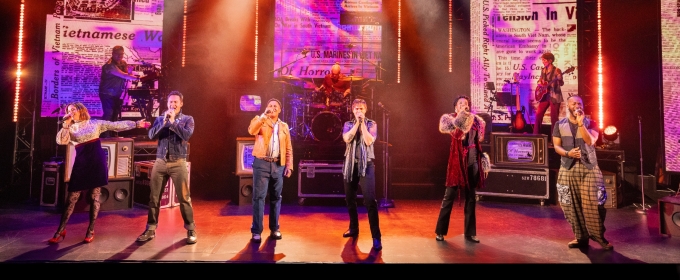 First Look at ROLLING THUNDER Musical Off-Broadway
Rolling Thunder began performances on Thursday, July 10 at New World Stages (340 W 50th St) ahead of its Thursday, July 24 opening.
First Look at ROLLING THUNDER Musical Off-Broadway
Rolling Thunder began performances on Thursday, July 10 at New World Stages (340 W 50th St) ahead of its Thursday, July 24 opening. First Look at the Revitalized Delacorte Theater
The Delacorte will officially reopen to the public on August 7, with Twelfth Night.
First Look at the Revitalized Delacorte Theater
The Delacorte will officially reopen to the public on August 7, with Twelfth Night. Noah Schnapp Visits STRANGER THINGS on Broadway
The series star joined Tony nominee Louis McCartney, star of the stage show, to surprise Stranger Things fans at the stage door after the performance.
Noah Schnapp Visits STRANGER THINGS on Broadway
The series star joined Tony nominee Louis McCartney, star of the stage show, to surprise Stranger Things fans at the stage door after the performance. Wayne Brady and Taye Diggs Join the Cast of MOULIN ROUGE! THE MUSICAL
Diggs plays through September 28, with Brady staying through November 9.
Wayne Brady and Taye Diggs Join the Cast of MOULIN ROUGE! THE MUSICAL
Diggs plays through September 28, with Brady staying through November 9. Sadie Sink Takes Final Bow in JOHN PROCTOR IS THE VILLAIN
She played her final performance on Sunday, July 13.
Sadie Sink Takes Final Bow in JOHN PROCTOR IS THE VILLAIN
She played her final performance on Sunday, July 13. First Look at ROLLING THUNDER Musical Off-Broadway
Rolling Thunder began performances on Thursday, July 10 at New World Stages (340 W 50th St) ahead of its Thursday, July 24 opening.
First Look at ROLLING THUNDER Musical Off-Broadway
Rolling Thunder began performances on Thursday, July 10 at New World Stages (340 W 50th St) ahead of its Thursday, July 24 opening.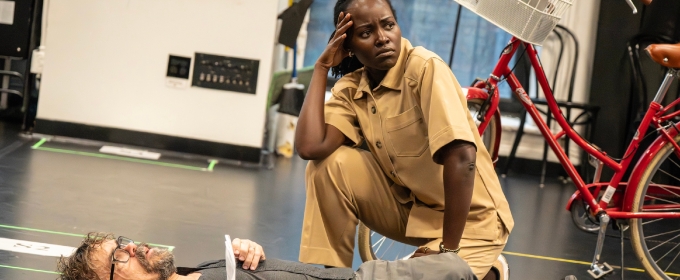 In Rehearsals for Shakespeare in the Park's TWELFTH NIGHT
Twelfth Night will run August 7 through September 14, 2025.
In Rehearsals for Shakespeare in the Park's TWELFTH NIGHT
Twelfth Night will run August 7 through September 14, 2025. Noah Schnapp Visits STRANGER THINGS on Broadway
The series star joined Tony nominee Louis McCartney, star of the stage show, to surprise Stranger Things fans at the stage door after the performance.
Noah Schnapp Visits STRANGER THINGS on Broadway
The series star joined Tony nominee Louis McCartney, star of the stage show, to surprise Stranger Things fans at the stage door after the performance. Wayne Brady and Taye Diggs Join the Cast of MOULIN ROUGE! THE MUSICAL
Diggs plays through September 28, with Brady staying through November 9.
Wayne Brady and Taye Diggs Join the Cast of MOULIN ROUGE! THE MUSICAL
Diggs plays through September 28, with Brady staying through November 9. Sadie Sink Takes Final Bow in JOHN PROCTOR IS THE VILLAIN
She played her final performance on Sunday, July 13.
Sadie Sink Takes Final Bow in JOHN PROCTOR IS THE VILLAIN
She played her final performance on Sunday, July 13. First Look at ROLLING THUNDER Musical Off-Broadway
Rolling Thunder began performances on Thursday, July 10 at New World Stages (340 W 50th St) ahead of its Thursday, July 24 opening.
First Look at ROLLING THUNDER Musical Off-Broadway
Rolling Thunder began performances on Thursday, July 10 at New World Stages (340 W 50th St) ahead of its Thursday, July 24 opening. In Rehearsals for Shakespeare in the Park's TWELFTH NIGHT
Twelfth Night will run August 7 through September 14, 2025.
In Rehearsals for Shakespeare in the Park's TWELFTH NIGHT
Twelfth Night will run August 7 through September 14, 2025.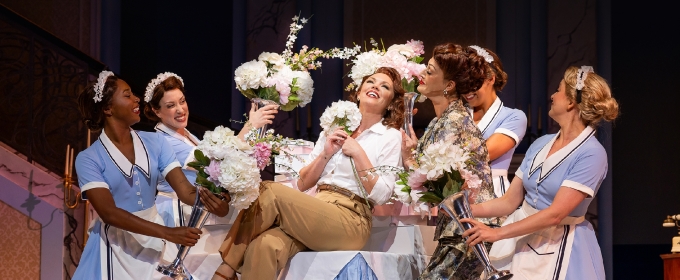 Robyn Hurder, Andrew Durand, and More Star in HIGH SOCIETY at Ogunquit Playhouse
The production runs July 24 through August 23 in Ogunquit, Maine.
Robyn Hurder, Andrew Durand, and More Star in HIGH SOCIETY at Ogunquit Playhouse
The production runs July 24 through August 23 in Ogunquit, Maine.  Wayne Brady and Taye Diggs Join the Cast of MOULIN ROUGE! THE MUSICAL
Diggs plays through September 28, with Brady staying through November 9.
Wayne Brady and Taye Diggs Join the Cast of MOULIN ROUGE! THE MUSICAL
Diggs plays through September 28, with Brady staying through November 9. Sadie Sink Takes Final Bow in JOHN PROCTOR IS THE VILLAIN
She played her final performance on Sunday, July 13.
Sadie Sink Takes Final Bow in JOHN PROCTOR IS THE VILLAIN
She played her final performance on Sunday, July 13. First Look at ROLLING THUNDER Musical Off-Broadway
Rolling Thunder began performances on Thursday, July 10 at New World Stages (340 W 50th St) ahead of its Thursday, July 24 opening.
First Look at ROLLING THUNDER Musical Off-Broadway
Rolling Thunder began performances on Thursday, July 10 at New World Stages (340 W 50th St) ahead of its Thursday, July 24 opening. In Rehearsals for Shakespeare in the Park's TWELFTH NIGHT
Twelfth Night will run August 7 through September 14, 2025.
In Rehearsals for Shakespeare in the Park's TWELFTH NIGHT
Twelfth Night will run August 7 through September 14, 2025. Robyn Hurder, Andrew Durand, and More Star in HIGH SOCIETY at Ogunquit Playhouse
The production runs July 24 through August 23 in Ogunquit, Maine.
Robyn Hurder, Andrew Durand, and More Star in HIGH SOCIETY at Ogunquit Playhouse
The production runs July 24 through August 23 in Ogunquit, Maine. 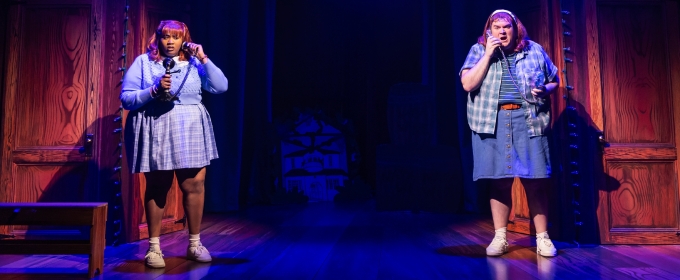 GINGER TWINSIES World Premiere First Look
Performances began on July 10, 2025, for the strictly limited, 16-week engagement through October 26, 2025.
GINGER TWINSIES World Premiere First Look
Performances began on July 10, 2025, for the strictly limited, 16-week engagement through October 26, 2025. Sadie Sink Takes Final Bow in JOHN PROCTOR IS THE VILLAIN
She played her final performance on Sunday, July 13.
Sadie Sink Takes Final Bow in JOHN PROCTOR IS THE VILLAIN
She played her final performance on Sunday, July 13. First Look at ROLLING THUNDER Musical Off-Broadway
Rolling Thunder began performances on Thursday, July 10 at New World Stages (340 W 50th St) ahead of its Thursday, July 24 opening.
First Look at ROLLING THUNDER Musical Off-Broadway
Rolling Thunder began performances on Thursday, July 10 at New World Stages (340 W 50th St) ahead of its Thursday, July 24 opening. In Rehearsals for Shakespeare in the Park's TWELFTH NIGHT
Twelfth Night will run August 7 through September 14, 2025.
In Rehearsals for Shakespeare in the Park's TWELFTH NIGHT
Twelfth Night will run August 7 through September 14, 2025. Robyn Hurder, Andrew Durand, and More Star in HIGH SOCIETY at Ogunquit Playhouse
The production runs July 24 through August 23 in Ogunquit, Maine.
Robyn Hurder, Andrew Durand, and More Star in HIGH SOCIETY at Ogunquit Playhouse
The production runs July 24 through August 23 in Ogunquit, Maine.  GINGER TWINSIES World Premiere First Look
Performances began on July 10, 2025, for the strictly limited, 16-week engagement through October 26, 2025.
GINGER TWINSIES World Premiere First Look
Performances began on July 10, 2025, for the strictly limited, 16-week engagement through October 26, 2025.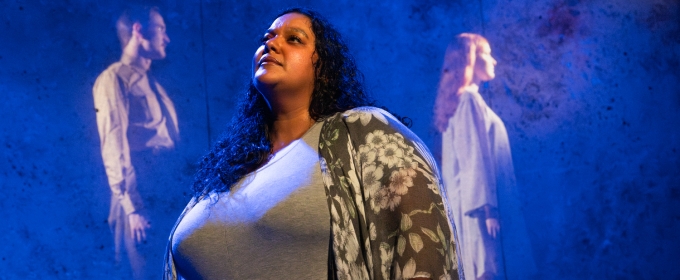 Blank Theatre Company Presents PASSION
Performances will run through August 10th.
Blank Theatre Company Presents PASSION
Performances will run through August 10th. First Look at ROLLING THUNDER Musical Off-Broadway
Rolling Thunder began performances on Thursday, July 10 at New World Stages (340 W 50th St) ahead of its Thursday, July 24 opening.
First Look at ROLLING THUNDER Musical Off-Broadway
Rolling Thunder began performances on Thursday, July 10 at New World Stages (340 W 50th St) ahead of its Thursday, July 24 opening. In Rehearsals for Shakespeare in the Park's TWELFTH NIGHT
Twelfth Night will run August 7 through September 14, 2025.
In Rehearsals for Shakespeare in the Park's TWELFTH NIGHT
Twelfth Night will run August 7 through September 14, 2025. Robyn Hurder, Andrew Durand, and More Star in HIGH SOCIETY at Ogunquit Playhouse
The production runs July 24 through August 23 in Ogunquit, Maine.
Robyn Hurder, Andrew Durand, and More Star in HIGH SOCIETY at Ogunquit Playhouse
The production runs July 24 through August 23 in Ogunquit, Maine.  GINGER TWINSIES World Premiere First Look
Performances began on July 10, 2025, for the strictly limited, 16-week engagement through October 26, 2025.
GINGER TWINSIES World Premiere First Look
Performances began on July 10, 2025, for the strictly limited, 16-week engagement through October 26, 2025. Blank Theatre Company Presents PASSION
Performances will run through August 10th.
Blank Theatre Company Presents PASSION
Performances will run through August 10th.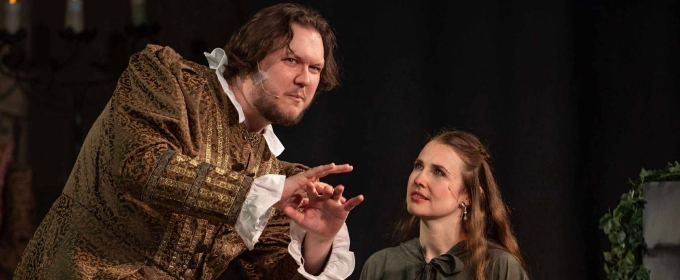 Review: CAMELOT at Brookfield Theatre
What did our critic think of CAMELOT at Brookfield Theatre?
Review: CAMELOT at Brookfield Theatre
What did our critic think of CAMELOT at Brookfield Theatre? In Rehearsals for Shakespeare in the Park's TWELFTH NIGHT
Twelfth Night will run August 7 through September 14, 2025.
In Rehearsals for Shakespeare in the Park's TWELFTH NIGHT
Twelfth Night will run August 7 through September 14, 2025. Robyn Hurder, Andrew Durand, and More Star in HIGH SOCIETY at Ogunquit Playhouse
The production runs July 24 through August 23 in Ogunquit, Maine.
Robyn Hurder, Andrew Durand, and More Star in HIGH SOCIETY at Ogunquit Playhouse
The production runs July 24 through August 23 in Ogunquit, Maine.  GINGER TWINSIES World Premiere First Look
Performances began on July 10, 2025, for the strictly limited, 16-week engagement through October 26, 2025.
GINGER TWINSIES World Premiere First Look
Performances began on July 10, 2025, for the strictly limited, 16-week engagement through October 26, 2025. Blank Theatre Company Presents PASSION
Performances will run through August 10th.
Blank Theatre Company Presents PASSION
Performances will run through August 10th. Review: CAMELOT at Brookfield Theatre
What did our critic think of CAMELOT at Brookfield Theatre?
Review: CAMELOT at Brookfield Theatre
What did our critic think of CAMELOT at Brookfield Theatre?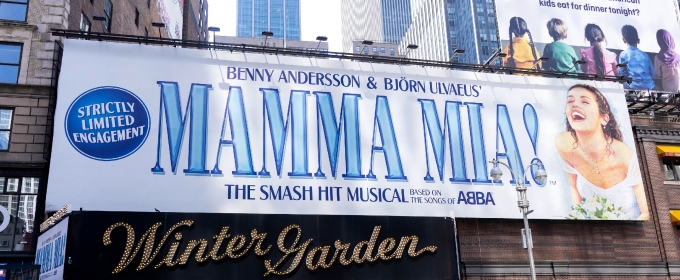 MAMMA MIA! Returns to the Winter Garden Theatre
The limited engagement will play for six months only, through Sunday, February 1, 2026.
MAMMA MIA! Returns to the Winter Garden Theatre
The limited engagement will play for six months only, through Sunday, February 1, 2026. Robyn Hurder, Andrew Durand, and More Star in HIGH SOCIETY at Ogunquit Playhouse
The production runs July 24 through August 23 in Ogunquit, Maine.
Robyn Hurder, Andrew Durand, and More Star in HIGH SOCIETY at Ogunquit Playhouse
The production runs July 24 through August 23 in Ogunquit, Maine.  GINGER TWINSIES World Premiere First Look
Performances began on July 10, 2025, for the strictly limited, 16-week engagement through October 26, 2025.
GINGER TWINSIES World Premiere First Look
Performances began on July 10, 2025, for the strictly limited, 16-week engagement through October 26, 2025. Blank Theatre Company Presents PASSION
Performances will run through August 10th.
Blank Theatre Company Presents PASSION
Performances will run through August 10th. Review: CAMELOT at Brookfield Theatre
What did our critic think of CAMELOT at Brookfield Theatre?
Review: CAMELOT at Brookfield Theatre
What did our critic think of CAMELOT at Brookfield Theatre? MAMMA MIA! Returns to the Winter Garden Theatre
The limited engagement will play for six months only, through Sunday, February 1, 2026.
MAMMA MIA! Returns to the Winter Garden Theatre
The limited engagement will play for six months only, through Sunday, February 1, 2026.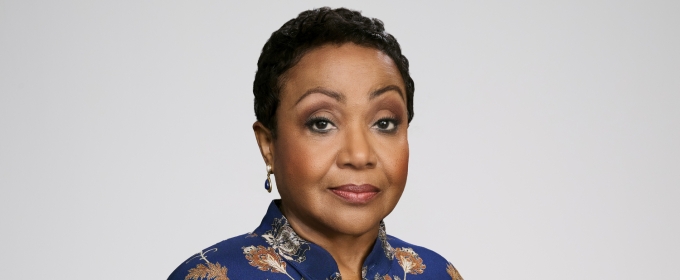 First Look At Brenda Pressley As 'Claudine Jasper' In PURPOSE
Pressley steps into the role of Claudine Jasper beginning July 15.
First Look At Brenda Pressley As 'Claudine Jasper' In PURPOSE
Pressley steps into the role of Claudine Jasper beginning July 15. GINGER TWINSIES World Premiere First Look
Performances began on July 10, 2025, for the strictly limited, 16-week engagement through October 26, 2025.
GINGER TWINSIES World Premiere First Look
Performances began on July 10, 2025, for the strictly limited, 16-week engagement through October 26, 2025. Blank Theatre Company Presents PASSION
Performances will run through August 10th.
Blank Theatre Company Presents PASSION
Performances will run through August 10th. Review: CAMELOT at Brookfield Theatre
What did our critic think of CAMELOT at Brookfield Theatre?
Review: CAMELOT at Brookfield Theatre
What did our critic think of CAMELOT at Brookfield Theatre? MAMMA MIA! Returns to the Winter Garden Theatre
The limited engagement will play for six months only, through Sunday, February 1, 2026.
MAMMA MIA! Returns to the Winter Garden Theatre
The limited engagement will play for six months only, through Sunday, February 1, 2026. First Look At Brenda Pressley As 'Claudine Jasper' In PURPOSE
Pressley steps into the role of Claudine Jasper beginning July 15.
First Look At Brenda Pressley As 'Claudine Jasper' In PURPOSE
Pressley steps into the role of Claudine Jasper beginning July 15.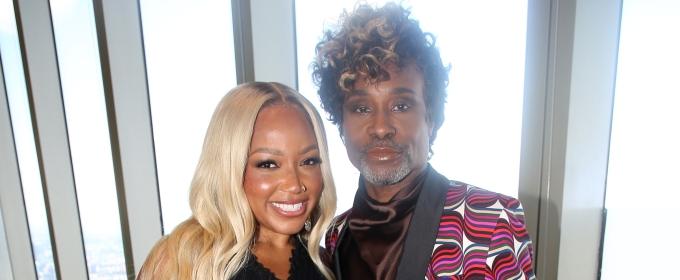 Porter and Wallace Meet the Press Ahead of CABARET Run
They began performances on Tuesday, July 22 and continue for the production’s final 13 weeks through Sunday, October 19.
Porter and Wallace Meet the Press Ahead of CABARET Run
They began performances on Tuesday, July 22 and continue for the production’s final 13 weeks through Sunday, October 19. Blank Theatre Company Presents PASSION
Performances will run through August 10th.
Blank Theatre Company Presents PASSION
Performances will run through August 10th. Review: CAMELOT at Brookfield Theatre
What did our critic think of CAMELOT at Brookfield Theatre?
Review: CAMELOT at Brookfield Theatre
What did our critic think of CAMELOT at Brookfield Theatre? MAMMA MIA! Returns to the Winter Garden Theatre
The limited engagement will play for six months only, through Sunday, February 1, 2026.
MAMMA MIA! Returns to the Winter Garden Theatre
The limited engagement will play for six months only, through Sunday, February 1, 2026. First Look At Brenda Pressley As 'Claudine Jasper' In PURPOSE
Pressley steps into the role of Claudine Jasper beginning July 15.
First Look At Brenda Pressley As 'Claudine Jasper' In PURPOSE
Pressley steps into the role of Claudine Jasper beginning July 15. Porter and Wallace Meet the Press Ahead of CABARET Run
They began performances on Tuesday, July 22 and continue for the production’s final 13 weeks through Sunday, October 19.
Porter and Wallace Meet the Press Ahead of CABARET Run
They began performances on Tuesday, July 22 and continue for the production’s final 13 weeks through Sunday, October 19. On the Opening Night Red Carpet for GINGER TWINSIES
Ginger Twinsies is running off-Broadway at the Orpheum Theatre.
On the Opening Night Red Carpet for GINGER TWINSIES
Ginger Twinsies is running off-Broadway at the Orpheum Theatre. Review: CAMELOT at Brookfield Theatre
What did our critic think of CAMELOT at Brookfield Theatre?
Review: CAMELOT at Brookfield Theatre
What did our critic think of CAMELOT at Brookfield Theatre? MAMMA MIA! Returns to the Winter Garden Theatre
The limited engagement will play for six months only, through Sunday, February 1, 2026.
MAMMA MIA! Returns to the Winter Garden Theatre
The limited engagement will play for six months only, through Sunday, February 1, 2026. First Look At Brenda Pressley As 'Claudine Jasper' In PURPOSE
Pressley steps into the role of Claudine Jasper beginning July 15.
First Look At Brenda Pressley As 'Claudine Jasper' In PURPOSE
Pressley steps into the role of Claudine Jasper beginning July 15. Porter and Wallace Meet the Press Ahead of CABARET Run
They began performances on Tuesday, July 22 and continue for the production’s final 13 weeks through Sunday, October 19.
Porter and Wallace Meet the Press Ahead of CABARET Run
They began performances on Tuesday, July 22 and continue for the production’s final 13 weeks through Sunday, October 19. On the Opening Night Red Carpet for GINGER TWINSIES
Ginger Twinsies is running off-Broadway at the Orpheum Theatre.
On the Opening Night Red Carpet for GINGER TWINSIES
Ginger Twinsies is running off-Broadway at the Orpheum Theatre. A PLAY ABOUT DAVID MAMET... Reading
Directed by Leslye Headland, the four-person cast featured Abbi Jacobson, Heléne Yorke, Billy Eichner and Paige Gilbert.
A PLAY ABOUT DAVID MAMET... Reading
Directed by Leslye Headland, the four-person cast featured Abbi Jacobson, Heléne Yorke, Billy Eichner and Paige Gilbert. MAMMA MIA! Returns to the Winter Garden Theatre
The limited engagement will play for six months only, through Sunday, February 1, 2026.
MAMMA MIA! Returns to the Winter Garden Theatre
The limited engagement will play for six months only, through Sunday, February 1, 2026. First Look At Brenda Pressley As 'Claudine Jasper' In PURPOSE
Pressley steps into the role of Claudine Jasper beginning July 15.
First Look At Brenda Pressley As 'Claudine Jasper' In PURPOSE
Pressley steps into the role of Claudine Jasper beginning July 15. Porter and Wallace Meet the Press Ahead of CABARET Run
They began performances on Tuesday, July 22 and continue for the production’s final 13 weeks through Sunday, October 19.
Porter and Wallace Meet the Press Ahead of CABARET Run
They began performances on Tuesday, July 22 and continue for the production’s final 13 weeks through Sunday, October 19. On the Opening Night Red Carpet for GINGER TWINSIES
Ginger Twinsies is running off-Broadway at the Orpheum Theatre.
On the Opening Night Red Carpet for GINGER TWINSIES
Ginger Twinsies is running off-Broadway at the Orpheum Theatre. A PLAY ABOUT DAVID MAMET... Reading
Directed by Leslye Headland, the four-person cast featured Abbi Jacobson, Heléne Yorke, Billy Eichner and Paige Gilbert.
A PLAY ABOUT DAVID MAMET... Reading
Directed by Leslye Headland, the four-person cast featured Abbi Jacobson, Heléne Yorke, Billy Eichner and Paige Gilbert. GINGER TWINSIES Celebrates Its Star-Studded Opening Night
The cast was joined by many familiar faces including Jesse Tyler Ferguson, Lin-Manuel Miranda, Busy Phillips, and more.
GINGER TWINSIES Celebrates Its Star-Studded Opening Night
The cast was joined by many familiar faces including Jesse Tyler Ferguson, Lin-Manuel Miranda, Busy Phillips, and more. First Look At Brenda Pressley As 'Claudine Jasper' In PURPOSE
Pressley steps into the role of Claudine Jasper beginning July 15.
First Look At Brenda Pressley As 'Claudine Jasper' In PURPOSE
Pressley steps into the role of Claudine Jasper beginning July 15. Porter and Wallace Meet the Press Ahead of CABARET Run
They began performances on Tuesday, July 22 and continue for the production’s final 13 weeks through Sunday, October 19.
Porter and Wallace Meet the Press Ahead of CABARET Run
They began performances on Tuesday, July 22 and continue for the production’s final 13 weeks through Sunday, October 19. On the Opening Night Red Carpet for GINGER TWINSIES
Ginger Twinsies is running off-Broadway at the Orpheum Theatre.
On the Opening Night Red Carpet for GINGER TWINSIES
Ginger Twinsies is running off-Broadway at the Orpheum Theatre. A PLAY ABOUT DAVID MAMET... Reading
Directed by Leslye Headland, the four-person cast featured Abbi Jacobson, Heléne Yorke, Billy Eichner and Paige Gilbert.
A PLAY ABOUT DAVID MAMET... Reading
Directed by Leslye Headland, the four-person cast featured Abbi Jacobson, Heléne Yorke, Billy Eichner and Paige Gilbert. GINGER TWINSIES Celebrates Its Star-Studded Opening Night
The cast was joined by many familiar faces including Jesse Tyler Ferguson, Lin-Manuel Miranda, Busy Phillips, and more.
GINGER TWINSIES Celebrates Its Star-Studded Opening Night
The cast was joined by many familiar faces including Jesse Tyler Ferguson, Lin-Manuel Miranda, Busy Phillips, and more. First Look at ROLLING THUNDER Off-Broadway
Rolling Thunder will open July 24 at New World Stages.
First Look at ROLLING THUNDER Off-Broadway
Rolling Thunder will open July 24 at New World Stages. Porter and Wallace Meet the Press Ahead of CABARET Run
They began performances on Tuesday, July 22 and continue for the production’s final 13 weeks through Sunday, October 19.
Porter and Wallace Meet the Press Ahead of CABARET Run
They began performances on Tuesday, July 22 and continue for the production’s final 13 weeks through Sunday, October 19. On the Opening Night Red Carpet for GINGER TWINSIES
Ginger Twinsies is running off-Broadway at the Orpheum Theatre.
On the Opening Night Red Carpet for GINGER TWINSIES
Ginger Twinsies is running off-Broadway at the Orpheum Theatre. A PLAY ABOUT DAVID MAMET... Reading
Directed by Leslye Headland, the four-person cast featured Abbi Jacobson, Heléne Yorke, Billy Eichner and Paige Gilbert.
A PLAY ABOUT DAVID MAMET... Reading
Directed by Leslye Headland, the four-person cast featured Abbi Jacobson, Heléne Yorke, Billy Eichner and Paige Gilbert. GINGER TWINSIES Celebrates Its Star-Studded Opening Night
The cast was joined by many familiar faces including Jesse Tyler Ferguson, Lin-Manuel Miranda, Busy Phillips, and more.
GINGER TWINSIES Celebrates Its Star-Studded Opening Night
The cast was joined by many familiar faces including Jesse Tyler Ferguson, Lin-Manuel Miranda, Busy Phillips, and more. First Look at ROLLING THUNDER Off-Broadway
Rolling Thunder will open July 24 at New World Stages.
First Look at ROLLING THUNDER Off-Broadway
Rolling Thunder will open July 24 at New World Stages.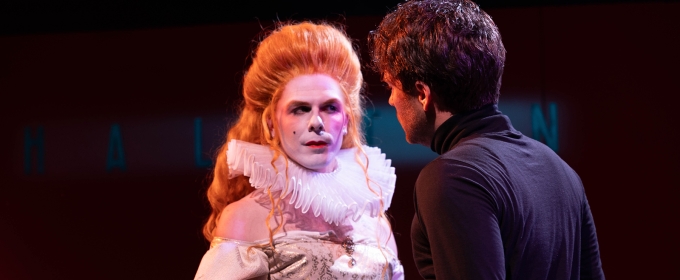 QUEEN FOR A DAY at Hell in a Handbag Productions
The production runs July 9 – August 3, 2025 at Bramble Arts Loft.
QUEEN FOR A DAY at Hell in a Handbag Productions
The production runs July 9 – August 3, 2025 at Bramble Arts Loft. On the Opening Night Red Carpet for GINGER TWINSIES
Ginger Twinsies is running off-Broadway at the Orpheum Theatre.
On the Opening Night Red Carpet for GINGER TWINSIES
Ginger Twinsies is running off-Broadway at the Orpheum Theatre. A PLAY ABOUT DAVID MAMET... Reading
Directed by Leslye Headland, the four-person cast featured Abbi Jacobson, Heléne Yorke, Billy Eichner and Paige Gilbert.
A PLAY ABOUT DAVID MAMET... Reading
Directed by Leslye Headland, the four-person cast featured Abbi Jacobson, Heléne Yorke, Billy Eichner and Paige Gilbert. GINGER TWINSIES Celebrates Its Star-Studded Opening Night
The cast was joined by many familiar faces including Jesse Tyler Ferguson, Lin-Manuel Miranda, Busy Phillips, and more.
GINGER TWINSIES Celebrates Its Star-Studded Opening Night
The cast was joined by many familiar faces including Jesse Tyler Ferguson, Lin-Manuel Miranda, Busy Phillips, and more. First Look at ROLLING THUNDER Off-Broadway
Rolling Thunder will open July 24 at New World Stages.
First Look at ROLLING THUNDER Off-Broadway
Rolling Thunder will open July 24 at New World Stages. QUEEN FOR A DAY at Hell in a Handbag Productions
The production runs July 9 – August 3, 2025 at Bramble Arts Loft.
QUEEN FOR A DAY at Hell in a Handbag Productions
The production runs July 9 – August 3, 2025 at Bramble Arts Loft.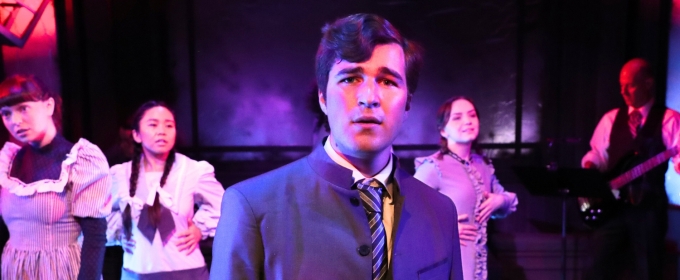 SPRING AWAKENING at Chance Theater
Spring Awakening will run through August 10 at Chance Theater
SPRING AWAKENING at Chance Theater
Spring Awakening will run through August 10 at Chance Theater A PLAY ABOUT DAVID MAMET... Reading
Directed by Leslye Headland, the four-person cast featured Abbi Jacobson, Heléne Yorke, Billy Eichner and Paige Gilbert.
A PLAY ABOUT DAVID MAMET... Reading
Directed by Leslye Headland, the four-person cast featured Abbi Jacobson, Heléne Yorke, Billy Eichner and Paige Gilbert. GINGER TWINSIES Celebrates Its Star-Studded Opening Night
The cast was joined by many familiar faces including Jesse Tyler Ferguson, Lin-Manuel Miranda, Busy Phillips, and more.
GINGER TWINSIES Celebrates Its Star-Studded Opening Night
The cast was joined by many familiar faces including Jesse Tyler Ferguson, Lin-Manuel Miranda, Busy Phillips, and more. First Look at ROLLING THUNDER Off-Broadway
Rolling Thunder will open July 24 at New World Stages.
First Look at ROLLING THUNDER Off-Broadway
Rolling Thunder will open July 24 at New World Stages. QUEEN FOR A DAY at Hell in a Handbag Productions
The production runs July 9 – August 3, 2025 at Bramble Arts Loft.
QUEEN FOR A DAY at Hell in a Handbag Productions
The production runs July 9 – August 3, 2025 at Bramble Arts Loft. SPRING AWAKENING at Chance Theater
Spring Awakening will run through August 10 at Chance Theater
SPRING AWAKENING at Chance Theater
Spring Awakening will run through August 10 at Chance Theater Inside Barrington Stage's Gala A NIGHT ON THE RED CARPET
The event was held on Monday, July 21.
Inside Barrington Stage's Gala A NIGHT ON THE RED CARPET
The event was held on Monday, July 21. GINGER TWINSIES Celebrates Its Star-Studded Opening Night
The cast was joined by many familiar faces including Jesse Tyler Ferguson, Lin-Manuel Miranda, Busy Phillips, and more.
GINGER TWINSIES Celebrates Its Star-Studded Opening Night
The cast was joined by many familiar faces including Jesse Tyler Ferguson, Lin-Manuel Miranda, Busy Phillips, and more. First Look at ROLLING THUNDER Off-Broadway
Rolling Thunder will open July 24 at New World Stages.
First Look at ROLLING THUNDER Off-Broadway
Rolling Thunder will open July 24 at New World Stages. QUEEN FOR A DAY at Hell in a Handbag Productions
The production runs July 9 – August 3, 2025 at Bramble Arts Loft.
QUEEN FOR A DAY at Hell in a Handbag Productions
The production runs July 9 – August 3, 2025 at Bramble Arts Loft. SPRING AWAKENING at Chance Theater
Spring Awakening will run through August 10 at Chance Theater
SPRING AWAKENING at Chance Theater
Spring Awakening will run through August 10 at Chance Theater Inside Barrington Stage's Gala A NIGHT ON THE RED CARPET
The event was held on Monday, July 21.
Inside Barrington Stage's Gala A NIGHT ON THE RED CARPET
The event was held on Monday, July 21. Photo: First Look at DOLLY: A TRUE ORIGINAL MUSICAL
Get a First look at Carrie St. Louis as ‘Dolly,’ Katie Rose Clarke as ‘Dolly Parton,’ and Quinn Titcomb as ‘Little Dolly.’
Photo: First Look at DOLLY: A TRUE ORIGINAL MUSICAL
Get a First look at Carrie St. Louis as ‘Dolly,’ Katie Rose Clarke as ‘Dolly Parton,’ and Quinn Titcomb as ‘Little Dolly.’ First Look at ROLLING THUNDER Off-Broadway
Rolling Thunder will open July 24 at New World Stages.
First Look at ROLLING THUNDER Off-Broadway
Rolling Thunder will open July 24 at New World Stages. QUEEN FOR A DAY at Hell in a Handbag Productions
The production runs July 9 – August 3, 2025 at Bramble Arts Loft.
QUEEN FOR A DAY at Hell in a Handbag Productions
The production runs July 9 – August 3, 2025 at Bramble Arts Loft. SPRING AWAKENING at Chance Theater
Spring Awakening will run through August 10 at Chance Theater
SPRING AWAKENING at Chance Theater
Spring Awakening will run through August 10 at Chance Theater Inside Barrington Stage's Gala A NIGHT ON THE RED CARPET
The event was held on Monday, July 21.
Inside Barrington Stage's Gala A NIGHT ON THE RED CARPET
The event was held on Monday, July 21. Photo: First Look at DOLLY: A TRUE ORIGINAL MUSICAL
Get a First look at Carrie St. Louis as ‘Dolly,’ Katie Rose Clarke as ‘Dolly Parton,’ and Quinn Titcomb as ‘Little Dolly.’
Photo: First Look at DOLLY: A TRUE ORIGINAL MUSICAL
Get a First look at Carrie St. Louis as ‘Dolly,’ Katie Rose Clarke as ‘Dolly Parton,’ and Quinn Titcomb as ‘Little Dolly.’ First Look at EVITA at The Muny
Performances run July 18-24.
First Look at EVITA at The Muny
Performances run July 18-24. QUEEN FOR A DAY at Hell in a Handbag Productions
The production runs July 9 – August 3, 2025 at Bramble Arts Loft.
QUEEN FOR A DAY at Hell in a Handbag Productions
The production runs July 9 – August 3, 2025 at Bramble Arts Loft. SPRING AWAKENING at Chance Theater
Spring Awakening will run through August 10 at Chance Theater
SPRING AWAKENING at Chance Theater
Spring Awakening will run through August 10 at Chance Theater Inside Barrington Stage's Gala A NIGHT ON THE RED CARPET
The event was held on Monday, July 21.
Inside Barrington Stage's Gala A NIGHT ON THE RED CARPET
The event was held on Monday, July 21. Photo: First Look at DOLLY: A TRUE ORIGINAL MUSICAL
Get a First look at Carrie St. Louis as ‘Dolly,’ Katie Rose Clarke as ‘Dolly Parton,’ and Quinn Titcomb as ‘Little Dolly.’
Photo: First Look at DOLLY: A TRUE ORIGINAL MUSICAL
Get a First look at Carrie St. Louis as ‘Dolly,’ Katie Rose Clarke as ‘Dolly Parton,’ and Quinn Titcomb as ‘Little Dolly.’ First Look at EVITA at The Muny
Performances run July 18-24.
First Look at EVITA at The Muny
Performances run July 18-24. Broadway Stars Come Together for the 27th Annual Broadway Barks
The event took place on Saturday, July 12 in Shubert Alley.
Broadway Stars Come Together for the 27th Annual Broadway Barks
The event took place on Saturday, July 12 in Shubert Alley. SPRING AWAKENING at Chance Theater
Spring Awakening will run through August 10 at Chance Theater
SPRING AWAKENING at Chance Theater
Spring Awakening will run through August 10 at Chance Theater Inside Barrington Stage's Gala A NIGHT ON THE RED CARPET
The event was held on Monday, July 21.
Inside Barrington Stage's Gala A NIGHT ON THE RED CARPET
The event was held on Monday, July 21. Photo: First Look at DOLLY: A TRUE ORIGINAL MUSICAL
Get a First look at Carrie St. Louis as ‘Dolly,’ Katie Rose Clarke as ‘Dolly Parton,’ and Quinn Titcomb as ‘Little Dolly.’
Photo: First Look at DOLLY: A TRUE ORIGINAL MUSICAL
Get a First look at Carrie St. Louis as ‘Dolly,’ Katie Rose Clarke as ‘Dolly Parton,’ and Quinn Titcomb as ‘Little Dolly.’ First Look at EVITA at The Muny
Performances run July 18-24.
First Look at EVITA at The Muny
Performances run July 18-24. Broadway Stars Come Together for the 27th Annual Broadway Barks
The event took place on Saturday, July 12 in Shubert Alley.
Broadway Stars Come Together for the 27th Annual Broadway Barks
The event took place on Saturday, July 12 in Shubert Alley. Lorde Visits The Cast of JOHN PROCTOR IS THE VILLAIN
Lorde visited with the cast on Friday, July 11.
Lorde Visits The Cast of JOHN PROCTOR IS THE VILLAIN
Lorde visited with the cast on Friday, July 11. Inside Barrington Stage's Gala A NIGHT ON THE RED CARPET
The event was held on Monday, July 21.
Inside Barrington Stage's Gala A NIGHT ON THE RED CARPET
The event was held on Monday, July 21. Photo: First Look at DOLLY: A TRUE ORIGINAL MUSICAL
Get a First look at Carrie St. Louis as ‘Dolly,’ Katie Rose Clarke as ‘Dolly Parton,’ and Quinn Titcomb as ‘Little Dolly.’
Photo: First Look at DOLLY: A TRUE ORIGINAL MUSICAL
Get a First look at Carrie St. Louis as ‘Dolly,’ Katie Rose Clarke as ‘Dolly Parton,’ and Quinn Titcomb as ‘Little Dolly.’ First Look at EVITA at The Muny
Performances run July 18-24.
First Look at EVITA at The Muny
Performances run July 18-24. Broadway Stars Come Together for the 27th Annual Broadway Barks
The event took place on Saturday, July 12 in Shubert Alley.
Broadway Stars Come Together for the 27th Annual Broadway Barks
The event took place on Saturday, July 12 in Shubert Alley. Lorde Visits The Cast of JOHN PROCTOR IS THE VILLAIN
Lorde visited with the cast on Friday, July 11.
Lorde Visits The Cast of JOHN PROCTOR IS THE VILLAIN
Lorde visited with the cast on Friday, July 11. Scherzinger and the Cast of SUNSET BLVD. Take Final Bow
The show played its final performance on July 20 at the St. James Theatre following 20 previews and 312 regular performances.
Scherzinger and the Cast of SUNSET BLVD. Take Final Bow
The show played its final performance on July 20 at the St. James Theatre following 20 previews and 312 regular performances.Industry
Get Broadway's #1 Newsletter

West End

EDINBURGH 2025: Hasan Al-Habib Q&A
Death to the West (Midlands) runs at Edfringe 30 July - 24 August
Death to the West (Midlands) runs at Edfringe 30 July - 24 August
New York City
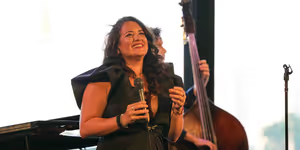
PHOTOS: NICOLE ZURAITIS Plays Dizzy’s Club
Husband Dan Pugach on drums, Idan Morim Guitar, Sam Weber bass.
Husband Dan Pugach on drums, Idan Morim Guitar, Sam Weber bass.
United States

BWW Q&A: Billy Harrigan Tighe on Waitress at THEATRE RALEIGH
The Broadway actor discusses the role, the rehearsal process, and what sets Theatre Raleigh apart.
The Broadway actor discusses the role, the rehearsal process, and what sets Theatre Raleigh apart.
International

Review: BEAUTY AND THE BEAST at Crown Theatre
Stunning reworking of iconic movie dazzles Perth
Stunning reworking of iconic movie dazzles Perth



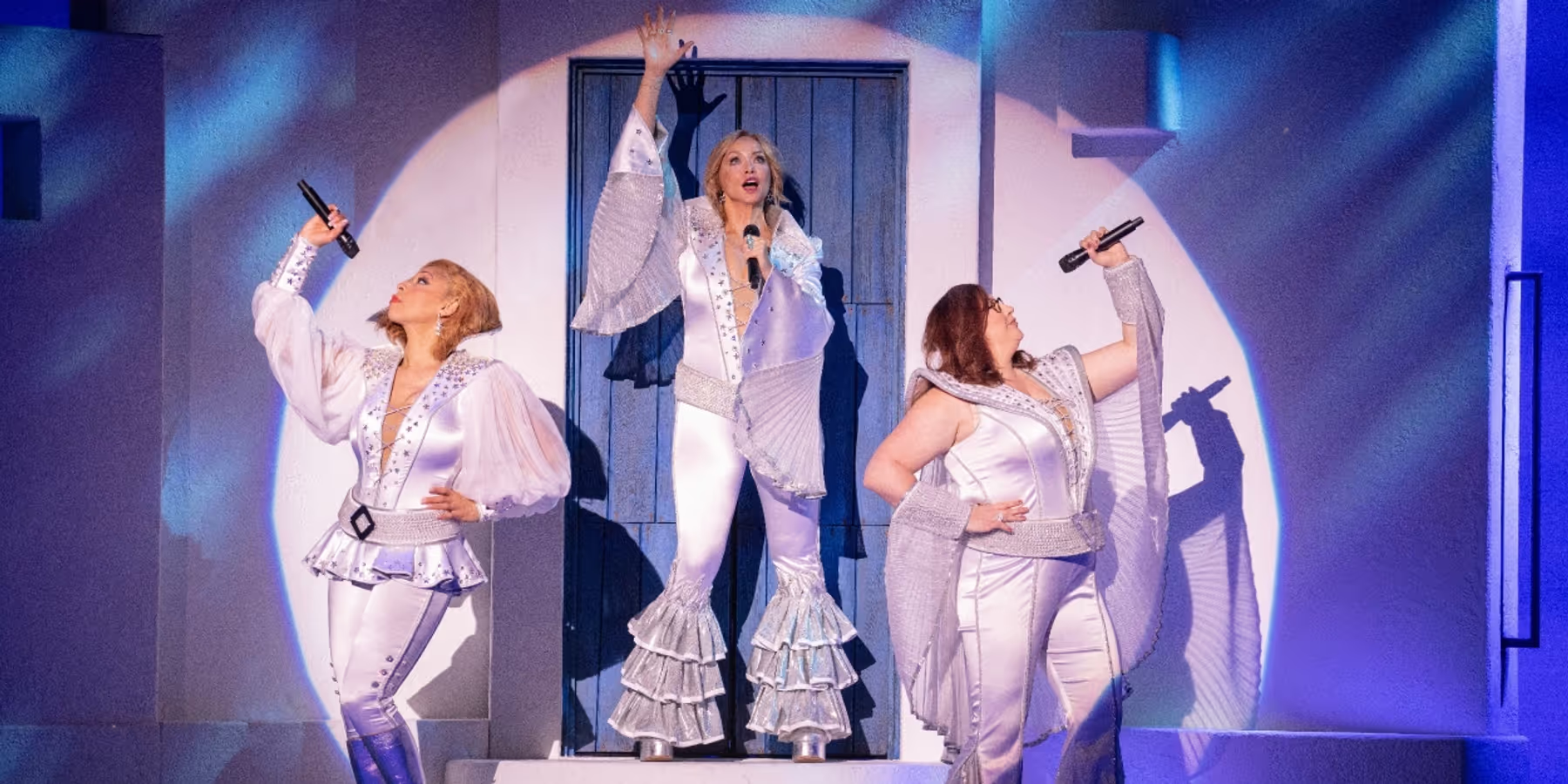
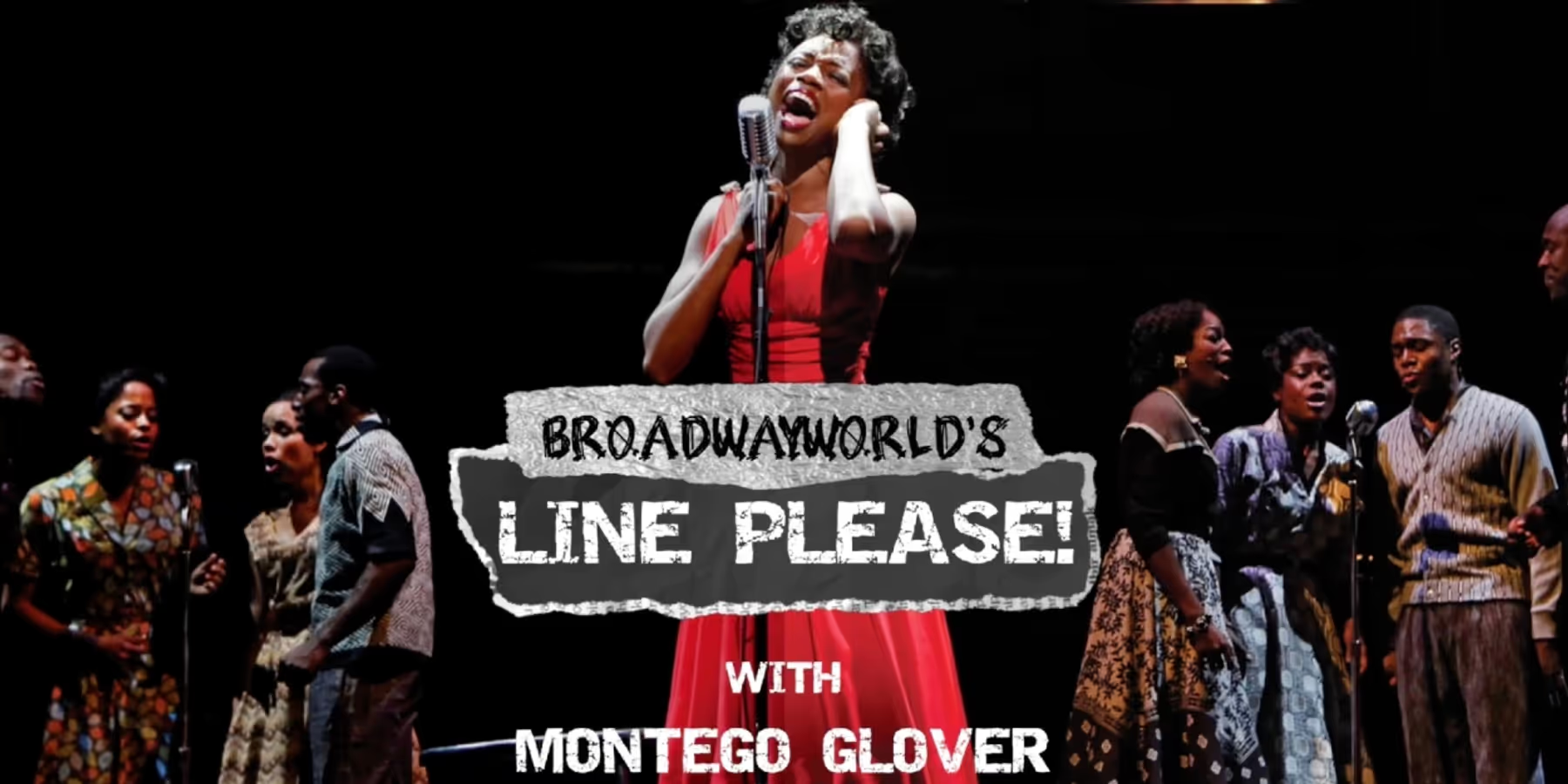

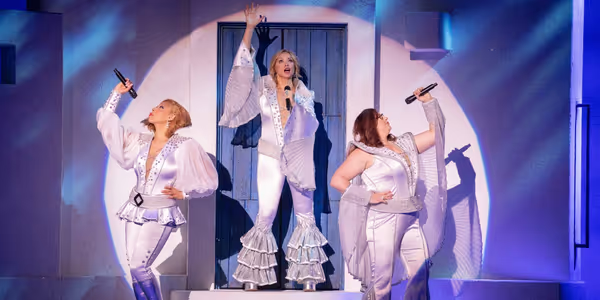






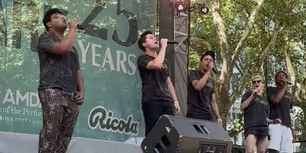



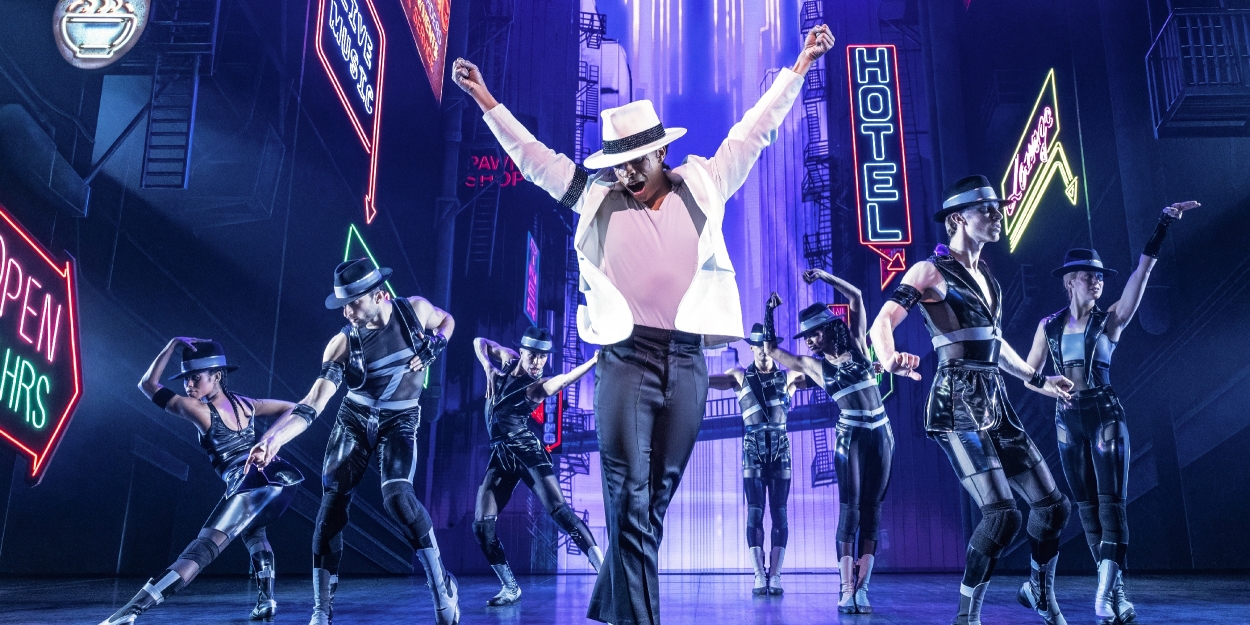
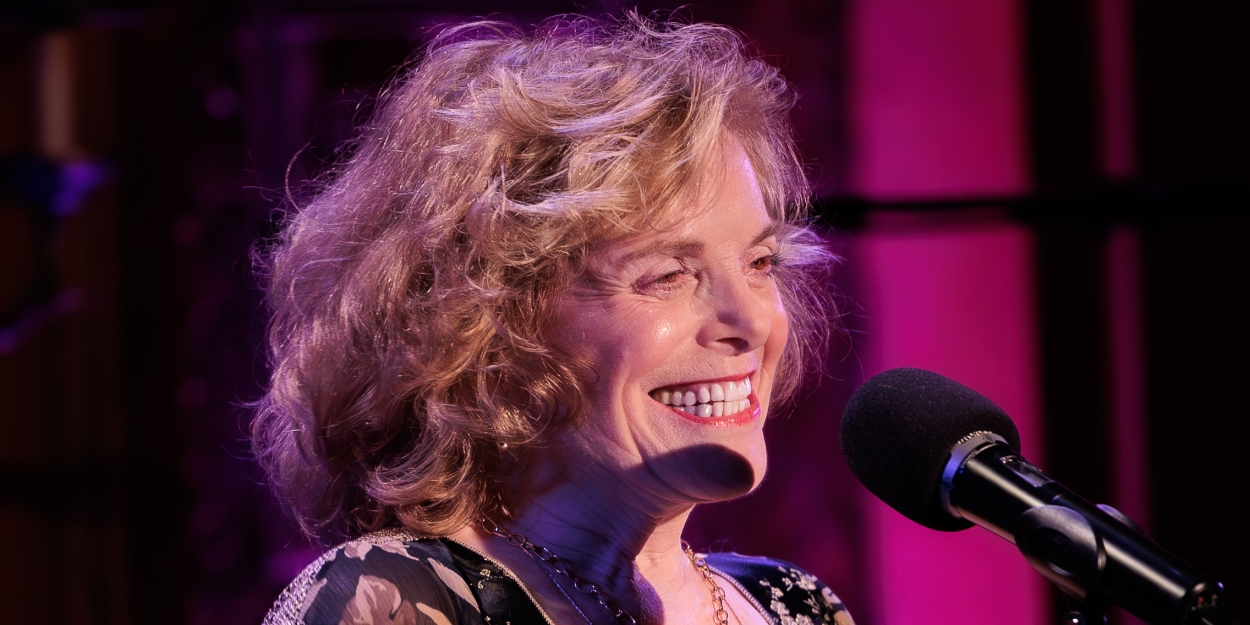

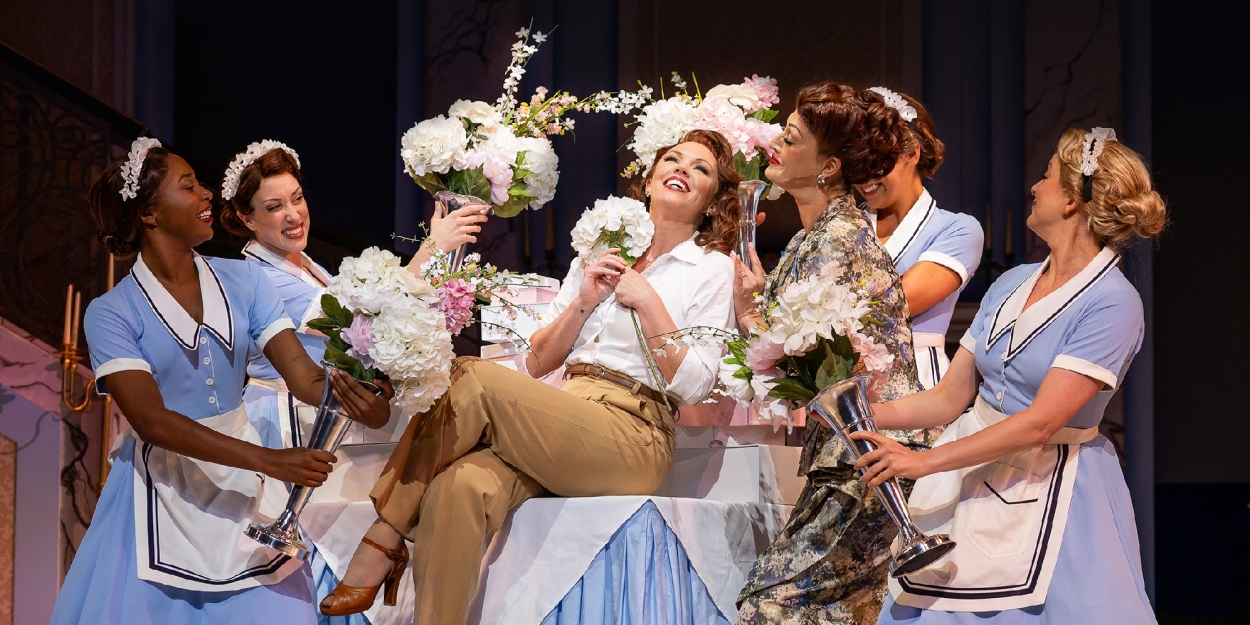




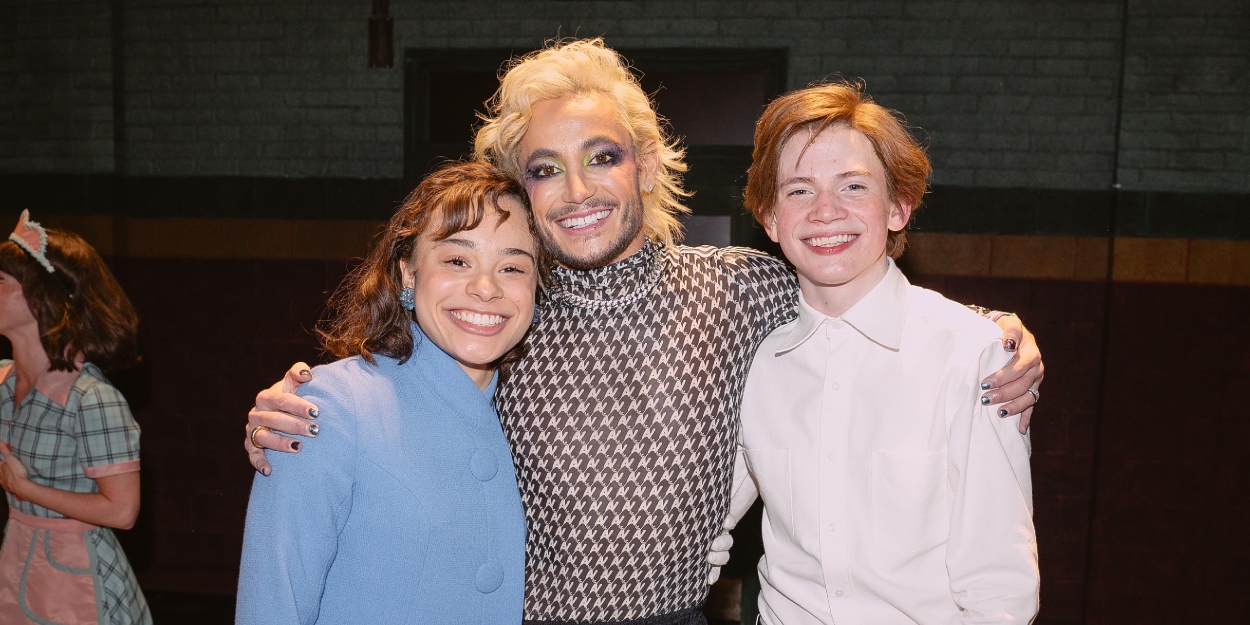
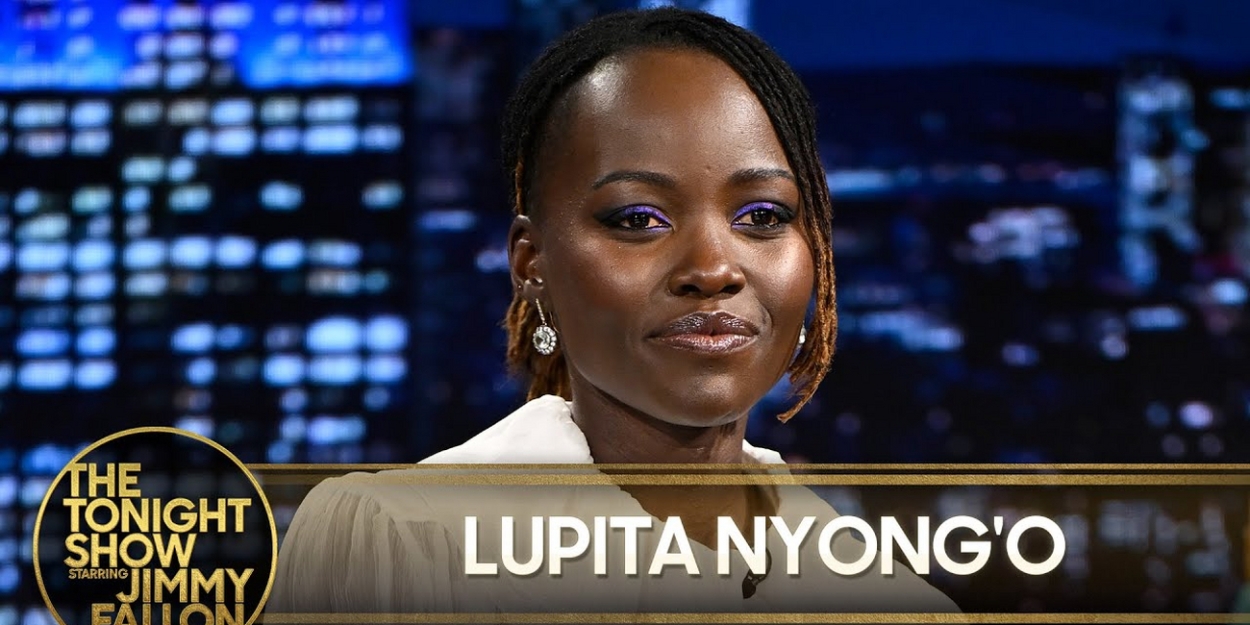








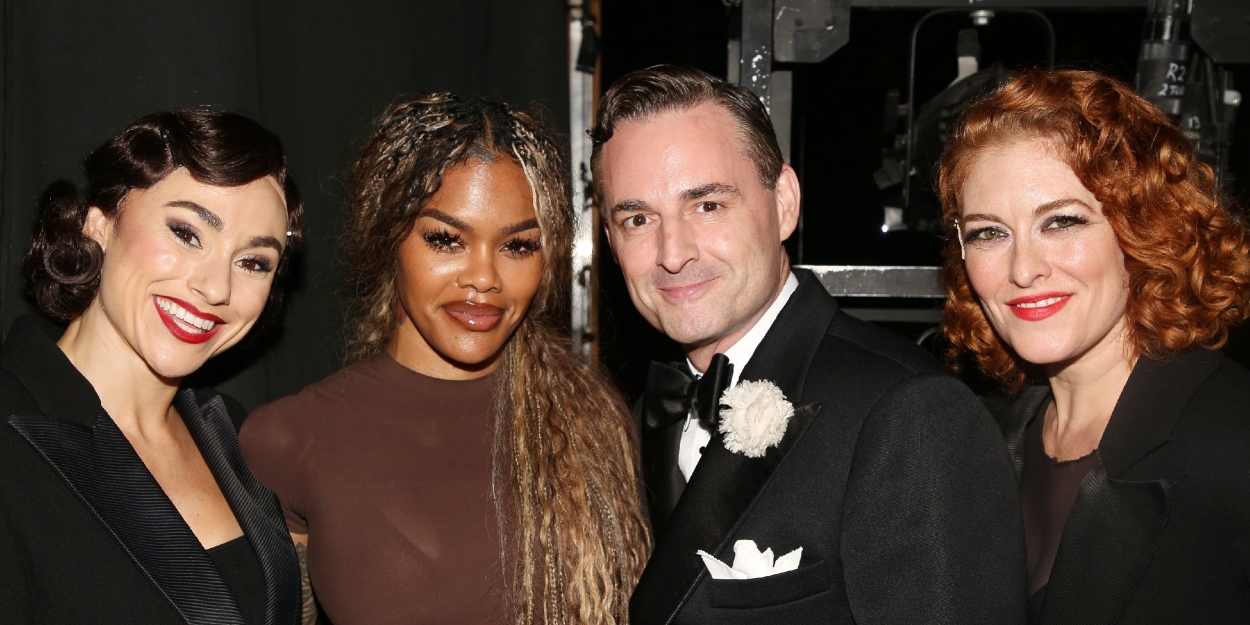

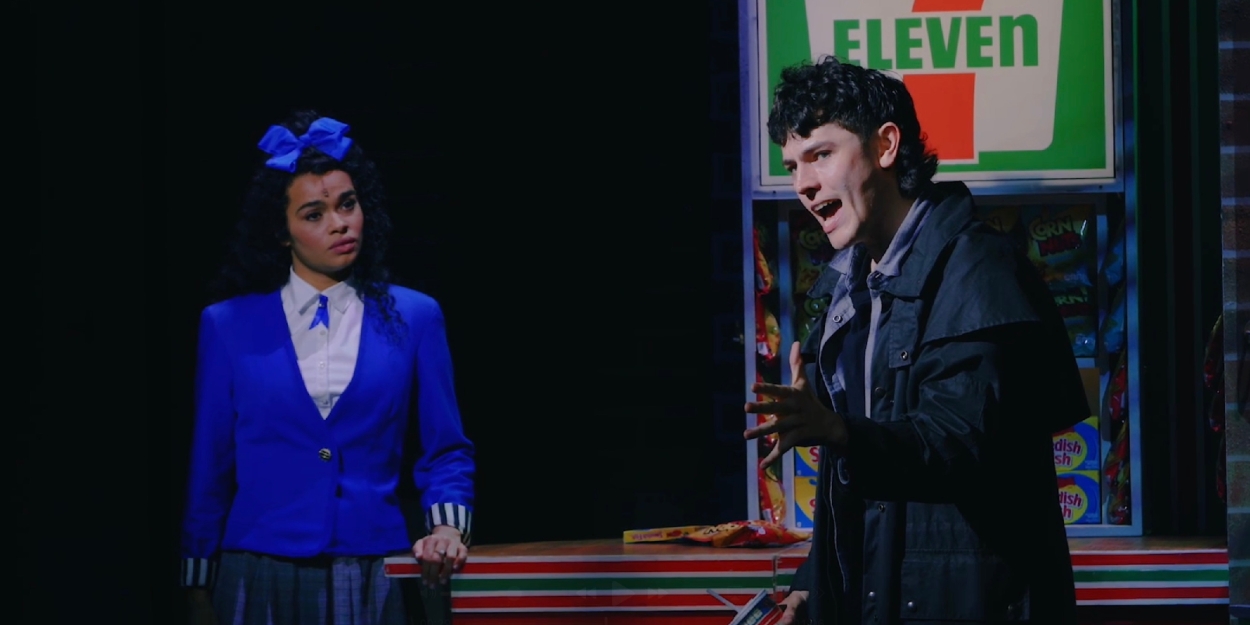
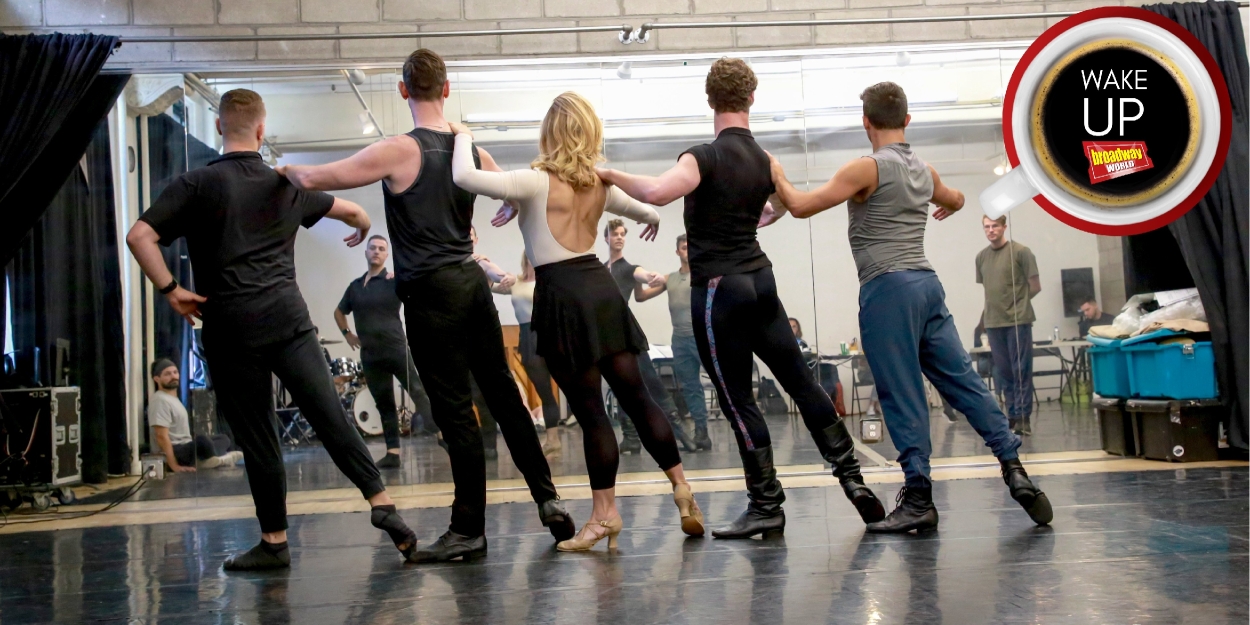


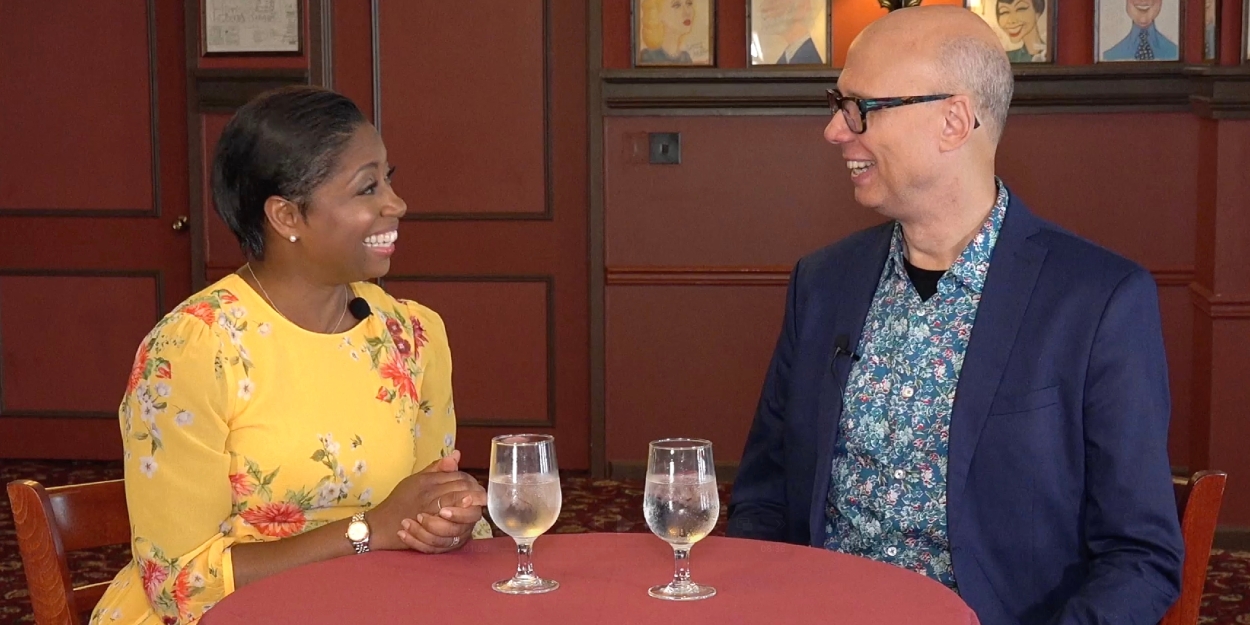
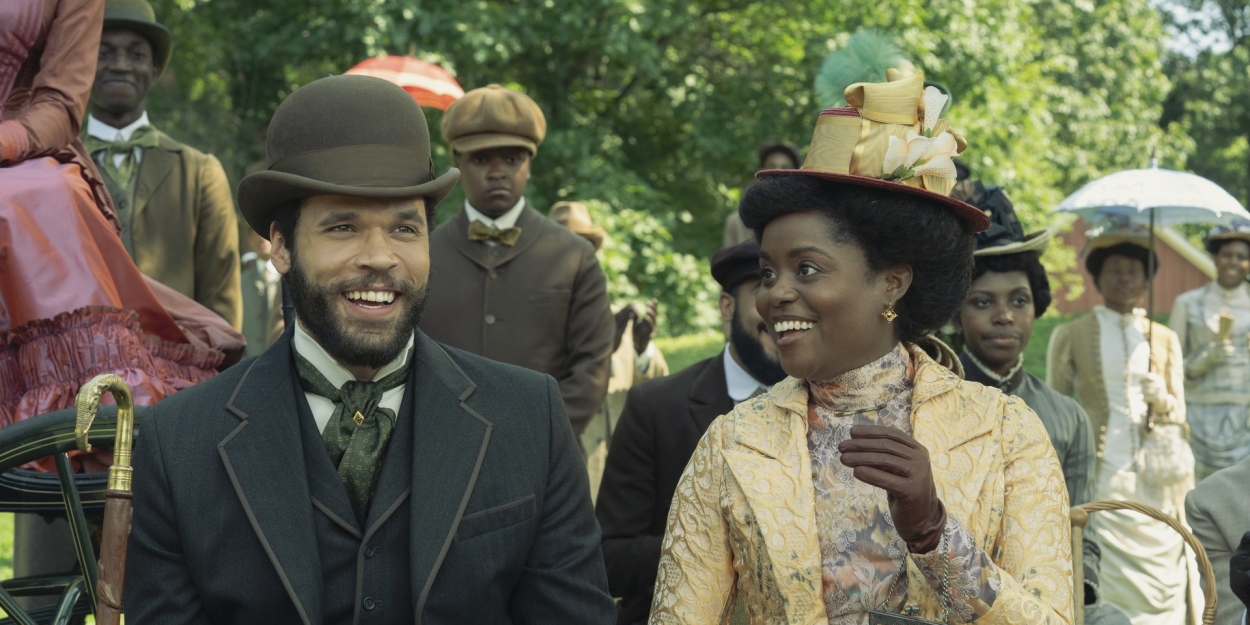







.jpg?format=auto&width=300)







